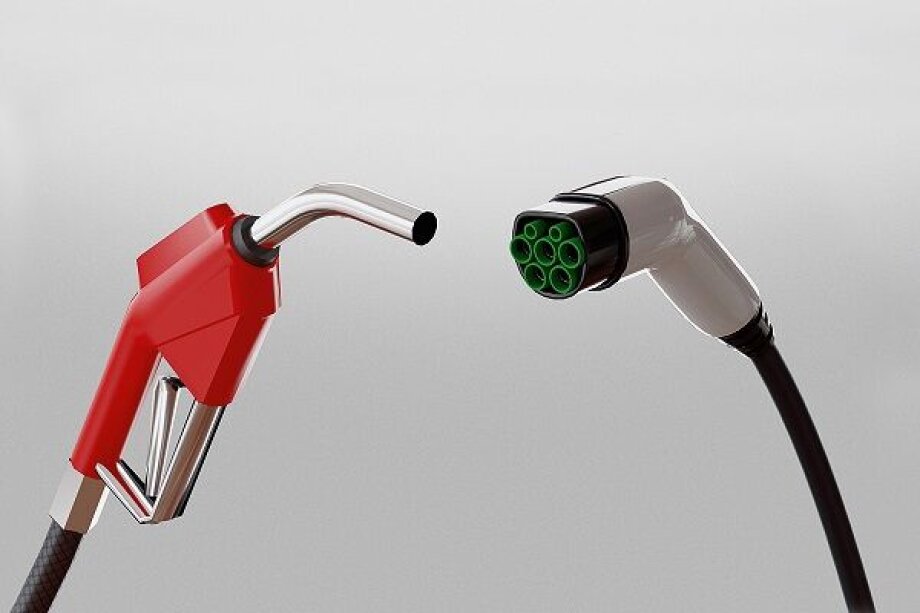IS POLAND ON TRACK WITH E-MOBILITY?
E-MOBILITY MARKET PROJECTIONS ARE SLIGHTLY LOWER BUT STILL OPTIMISTIC. BY ALEKSANDER RAJCH

E-MOBILITY MARKET PROJECTIONS ARE SLIGHTLY LOWER BUT STILL OPTIMISTIC. BY ALEKSANDER RAJCH

Even as the numbers regarding the Polish e-mobility market are still low and developing at a slower pace than in Western and Northern European countries, the future can be viewed in bright colors. With close to 30,000 EVs, out of which nearly 14,000 are fully electric cars and with a little over 1,600 public charging stations, the EV ecosystem in Poland has yet much to do. In some cases though, Poland is a leader: in the field of e-buses, where Warsaw has the third-largest fleet in Europe, after only London and Moscow. The country’s public transport has now covered over 1 million kilometers with zero-emission vehicles. Poland is also a battery leader, with the largest production facility in the world operated by LG Energy Solution but many renowned operators are also playing an important part of the robust supply chain, including fully Polish brands. In this sector, Poland is amongst the top five global producers and the first in the EU, with the battery sector constituting 2% of the Polish export value.
DECARBONIZATION PRIORITIZED
The awareness regarding the priorities for decarbonization is also growing amongst wider groups of stakeholders. In September, the organization of the main Polish cities Unia Metropolii Polskich (The Union of Polish Metropolises in English), Polish Alternative Fuels Association (PSPA) and representatives of major Polish agglomerations signed the Declaration for the Development of Clean Transport Zones. As 250 such zones already function in the EU, Poland is lagging considerably in this regard. The new initiative will be a basis for the development of clean and emission-free areas in Polish cities, where the spark for the development of emission-free city areas will come from the level of local authorities, which expressed a joint intention of pursuing such a goal for the first time. The signing parties also proposed recommendations of precise changes to the Law on Electromobility and Alternative Fuels in order to efficiently introduce the needed regulations.
With important legislative impulses on the EU level, like the “Fit for 55” package, if it is implemented, the market may thrive even further. The EV fleet may undergo a very dynamic expansion once the “My EV” subsidy program introduced in July is fully on track in the fourth quarter of 2021. As new vehicles will be bought thanks to the support program, the demand for new charging infrastructure will also increase. The premium report prepared by PSPA entitled “the Polish EV Outlook” (PEVO) predicts that in 2025 there may be as many, as 291,000 electric vehicles in Poland, including personal and utility vehicles. Of course, currently, the EV acquisitions are very focused around locations that are stronger economically, like Warsaw which is responsible for a quarter of the EVs registered last year. This means 3.82 EVs per 1,000 inhabitants of the Polish capital. This trend is slightly changing, with 12.5% of new registrations in municipalities between 150,000 to 300,000 inhabitants and 11.7% in those with 50,000 to 150,000.
THE HIGHEST SHARES OF DC CHARGERS
For EV charging infrastructure the current levels are still low, but Poland has one of the highest shares of DC chargers in its system at 32%. The rends also presently show that the amount of public EV charging far outweighs the availability of private stations. According to the PEVO report, this trend will change so that in 2025 there will be approximately 43,000 public EV charging points and between 90,000 to 115,000 private points. Jointly, this could mean close to 150,000 EV charging points in under five years. As just in the past 12 months the number of public chargers increased by 30%, these projections seem quite realistic. The spatial disproportion of charging locations still exists in Poland, as 54% of the charging stations are located in large agglomerations. As much as 32% of the charging stations in Poland are located in public parking areas, 23% in shopping malls, 17.5% in hotels and 12% in gas stations. Most of them are available at all times, with 92% of all the EV charging infrastructure available 24 hours per day. Poland is also gaining its charging capacity in connection to the EU, as 12% of DC stations were installed on the TEN-T network.
STATS STACK UP WELL
So it’s fair to say that the current statistics look good and bode well for the future, but of course, some areas have to be addressed. As the “My EV” subsidy program is assessed well by the market stakeholders, the introduction of a support policy for the EV charging infrastructure becomes crucial and urgent. Meanwhile, it’s still pending notification from the European Commission and one cannot define when this program may be expected. The amendment to the law on electromobility and alternative fuels is also delayed, making it difficult to expand the charging infrastructure in less populated and remote municipalities. There are numerous areas that are currently under development, which directly or indirectly influence the market. Charging operators need more access to the grid and much is needed in the Polish DSO regulations in order to accelerate and facilitate infrastructure development. As most of the market is aware of this, those areas may soon ameliorate. However, the energy system lacks stability and elasticity to connect with private RES capacities, which may also pose problems for the future. The public administration in Poland also expresses awareness that new support programs are needed, especially for EV charging stations.
A much more positive forecast is discernible for the increasing numbers of EVs although the slightly delayed “My EV” program and the crisis in semiconductor supply may cause fast growth to occur more toward the beginning of 2022. The scenarios for the future may vary and credible sources of data and information are also very important for the market to understand the most significant factors and areas of development. PEVO, as one such source, was premiered during the New Mobility Congress in Łódź with an auditorium of over 700 stakeholders at the beginning of October 2021. Despite the challenges, the available numbers show that e-mobility is still on track, which is also confirmed by the abundance of discussions regarding the subject during the early fall of 2021.

The Polish Alternative Fuels Association (PSPA) states that it is the largest, fully representative industry organization, which promotes zero- and low-emission technologies in transport in Poland. Aleksander Rajch is the director for external relations and board member at PSPA.